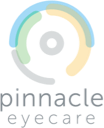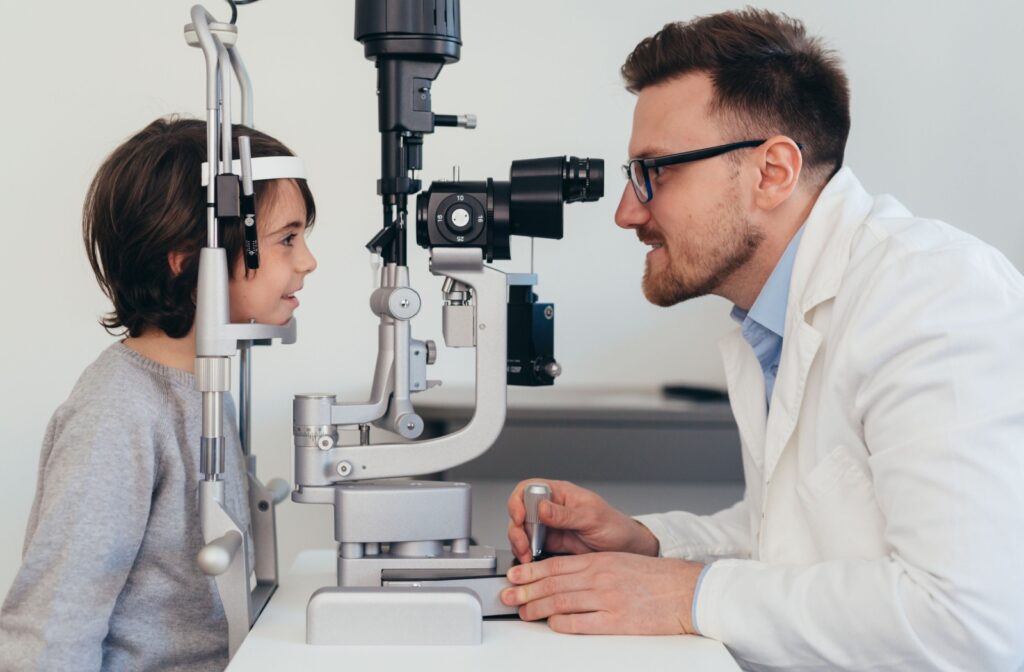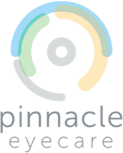You might notice it when you’re driving—road signs seem a bit fuzzy until you’re right up close. Or maybe your child mentions that the board at the front of the classroom is hard to read. This experience, a condition known as myopia or nearsightedness, is a common part of life for many families.
It leads many patients to ask us if there’s a way to turn back the clock on their vision. The direct answer is that myopia cannot be reversed, but there are effective ways to manage its progression. This is especially important for children and teens whose eyes are still developing.
A Clear Look at Myopia & Nearsightedness
Myopia is an eye condition that makes distant objects appear blurry, while close-up objects stay clear. This happens when the eye grows too long from front to back. As a result, light focuses in front of the retina instead of directly on it.
What Causes Nearsightedness?
The shape of your eye determines how light is focused, which affects how you see. A slightly longer eyeball causes myopia, impacting your ability to see things at a distance.
Both your family’s history and daily environmental factors like spending a lot of time on close-up tasks can play a role.
At What Age Does Myopia Usually Start?
Nearsightedness often appears during childhood. It can then advance through the teenage years and into early adulthood. Identifying myopia early is helpful because a child’s eyes are still growing, making it a key time to manage the condition’s progression.
Common Signs of Nearsightedness
You or your child might show signs of myopia that go beyond just having blurry distance vision. It’s helpful to look for these common indicators:
- Squinting to see things far away, like a movie screen or road signs
- Needing to sit closer to the television or the front of a classroom
- Headaches from eye strain
- Rubbing eyes more often than usual
The Truth About Myopia & Reversal
Once the eye grows to a certain length during childhood and adolescence, it is not possible to make it shorter again. For this reason, we focus on managing myopia and slowing its progression.
The Difference Between Correction & Cure
Vision correction methods like glasses and contact lenses can help you see clearly, but they don’t change the physical structure of your eye. Procedures like laser eye surgery can reshape the cornea for clearer vision, but the eyeball’s length remains the same.
The goal of myopia management is to slow down that lengthening process over time.

How to Slow the Progression of Myopia
While you can’t go back in time, you can take meaningful steps to slow down how quickly myopia advances.
Early & Regular Eye Exams Are Key
Regular eye exams are the foundation of good eye care and myopia management. During an exam, we can measure the eye and track any changes over time. Your eye doctor can provide a thorough exam and discuss a personalized plan for you or your child.
MiSight Contact Lenses
At Pinnacle Eyecare, we offer MiSight contact lenses. These lenses not only correct the refractive error caused by myopia, but they also help slow down the eye’s natural elongation as it grows.
MiSight lenses are specifically designed for children aged 8 to 12. They feature two treatment zones that create a controlled myopic defocus. This means the lenses focus images slightly in front of the retina instead of behind it, which helps reduce the progression of myopia over time.
The Role of Outdoor Time
Believe it or not, simply spending more time outdoors can be very beneficial for a child’s eyes. Studies suggest that about 2 hours of outdoor time per day can help. Bright, natural light helps regulate eye growth and can reduce the risk of myopia development.
Myopia Progression & Long-Term Eye Health
Slowing down myopia is about more than just avoiding thicker glasses. It’s an important step in protecting your long-term eye health. By managing myopia now, you are investing in healthier eyes for the future.
Why Slow Myopia Progression?
When nearsightedness becomes more advanced, it is known as high myopia. This condition can increase the risk for serious eye diseases later in life, such as:
- Glaucoma
- Cataracts
- Retinal detachment
- Myopic macular degeneration
Myopia Control from Your Trusted Eye Doctor
By taking action to manage myopia early, you can help reduce these future health risks. It’s a proactive step toward a lifetime of clearer, healthier vision.
The team at Pinnacle Eyecare is here to help you and your family navigate your options and find a path that works for you, so book your appointment today.






